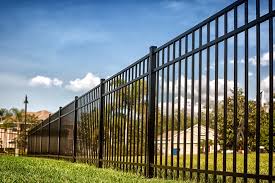Beyond their functional utility, fences maintain powerful symbolic relevance in human being communities, symbolizing concepts of management, personal identity, and social restrictions. As physical manifestations of boundaries, fences (ploty) design our perceptions of room and effect our connections together with the created surroundings. Let’s check out the further that means behind fences and understand why these are not only structures—they are symbols of human traditions and modern society.
1. Ownership and Territory:
fences (ploty) symbolize ownership and territorial borders, marking where 1 home ends and the other starts. By understanding restrictions, fences establish feelings of management and control of territory, reinforcing person or collective identity. In non-urban locations, fences function as real markers of property ownership, delineating job areas, pastures, and residence collections. In urban settings, fences demarcate exclusive house from general public area, asserting management and exclusivity.
2. Social Division and Addition:
Fences can also symbolize interpersonal divisions and exclusions inside of modern society. Higher wall surfaces and barriers may indicate splitting up and inequality, creating physical obstacles that break down communities depending on socio-monetary position or another elements. On the other hand, fences with available gates and very low wall surfaces represent inclusivity and link, appealing discussion and encouraging feelings of group. The design and style and exposure of fences reveal root social dynamics and potential constructions.
3. Cultural Personal identity:
In lots of ethnicities, fences keep serious ethnic relevance and they are imbued with meaning that mirrors ethnic ideals and cultures. By way of example, in many ethnicities, elaborate fences are symbols of position and reputation, showing riches and affluence. On the other hand, in other countries, basic and efficient fences can be appreciated with regard to their usefulness and utilitarianism. Learning the ethnic framework of fences allows us to value their symbolic value in various societies.
4. Mental Borders:
Fences can also signify psychological boundaries that define personal area and autonomy. By producing bodily limitations, fences supply individuals with a sense of security and personal privacy, letting them determine restrictions and management access to their personal place. This sensation of boundary control is vital for sustaining psychological well-simply being and social interactions, since it enables visitors to assert their autonomy and protect their individual restrictions.
5. Environment Influence:
The proliferation of fences has ecological ramifications, particularly in natural panoramas and wild animals habitats. Comprehensive fencing can fragment environments and disrupt wild animals corridors, affecting biodiversity and ecosystem well being. However, eco-warm and friendly fencing alternate options, including wildlife-friendly patterns and permeable limitations, offer alternatives that equilibrium human being requires with environmental preservation. By lessening their ecological footprint, fences can play a role in the preservation of normal panoramas and wild animals environments.
In summary, fences are more than simply actual physical components these are emblems that signify intricate interpersonal, ethnic, and emotional dynamics. As guardians of restrictions, fences condition individual relationships and panoramas, highlighting and reinforcing social ideals and norms. Appreciating the symbolic incredible importance of fences enriches our idea of the built surroundings and our partnership with the land.



